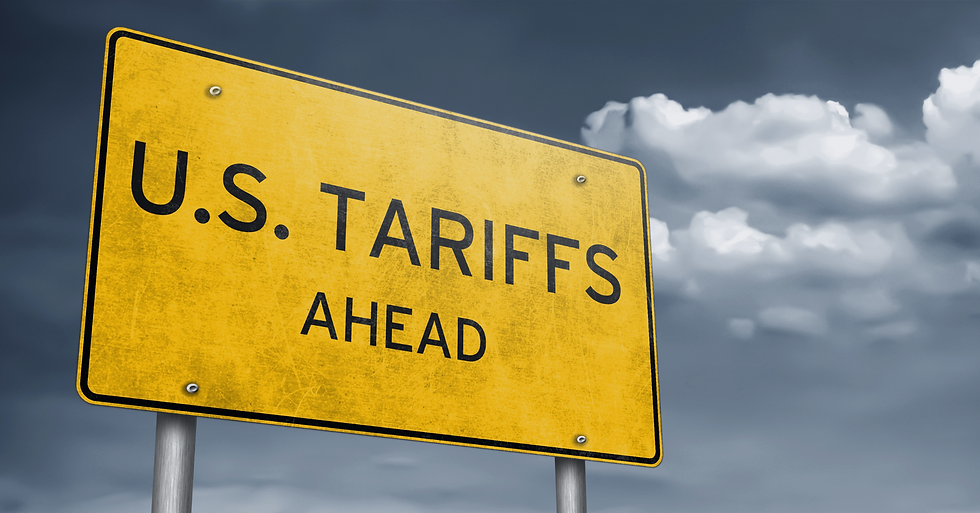Navigating New Markets: Key Considerations in Light of U.S. Tariffs
- Gord Smith

- Feb 5
- 3 min read

As U.S. tariffs continue to reshape global trade dynamics, businesses heavily reliant on American markets face heightened risks and uncertainties. Diversifying into new markets is no longer just a growth strategy—it’s a necessity. A well-defined business entry strategy is crucial to navigate these changes effectively. However, successful market entry is complex and requires thoughtful planning. Here are key considerations to guide your market entry strategy in today’s volatile trade environment.
1. Market Selection: Identifying the Right Opportunity
Choosing the right market is the cornerstone of a successful business entry strategy. Consider the following factors to ensure strategic alignment:
Market Demand: Assess if there’s a genuine need for your products or services. Analyze industry trends, customer preferences, and market gaps to determine growth potential.
Competitive Landscape: Study the competition—who they are, their market share, and what differentiates your offering. A clear understanding will help refine your go-to-market strategy.
Economic Stability: Evaluate the country's economic health, growth trajectory, and currency stability to ensure long-term sustainability.
Regulatory Environment: Understand local laws, import regulations, and compliance requirements. This minimizes legal risks that could derail your market entry efforts.
Cultural Fit: Adapt your product or service to local tastes, cultural norms, and business practices for better market acceptance.
2. Regulatory and Compliance Considerations
Navigating legal frameworks is critical when developing your business entry strategy. Every new market has its own set of regulations:
Trade Regulations and Tariffs: Investigate current trade agreements, especially in light of U.S. tariffs. Countries within free trade agreements (FTAs) with your home country might offer advantages.
Customs Procedures: Familiarize yourself with documentation requirements, import/export restrictions, and duty payments to avoid delays and penalties.
Intellectual Property Protection: Ensure your IP rights are safeguarded under local laws to prevent infringement and counterfeiting, which can jeopardize your market entry success.
3. Go-to-Market Strategy
A robust go-to-market strategy is essential for streamlining your expansion efforts. It defines how your business will deliver value to new customers and gain competitive advantage:
Market Entry Mode: Decide whether to enter through direct exports, joint ventures, franchising, licensing, or establishing a local subsidiary. This choice shapes your entire business entry strategy.
Pricing Strategy: Adapt pricing to reflect local purchasing power, competitor pricing, and cost structures. Consider the impact of U.S. tariffs on your product pricing in specific markets.
Distribution Channels: Identify the most effective channels—whether through local distributors, e-commerce platforms, or direct sales networks.
Marketing and Branding: Tailor your messaging to resonate with local audiences, considering cultural nuances and language preferences to build brand equity.
4. Operational Readiness
Operational efficiency can make or break your market entry strategy. Ensuring readiness across key operational areas is crucial:
Supply Chain Adaptation: Assess whether your current supply chain can meet new market demands. Explore nearshoring or regional partnerships to reduce costs and mitigate risks tied to U.S. tariffs.
Talent Acquisition: Determine the need for local talent versus relocating existing teams. Understanding local labor laws and HR practices will help you avoid compliance issues.
Technology and Infrastructure: Ensure your IT systems, logistics, and operations are scalable, secure, and compliant with local regulations to support growth.
5. Risk Management and Financial Planning
Diversifying into new markets reduces dependency risks but also introduces new challenges. A proactive approach to risk management is key to any business entry strategy:
Political and Economic Risks: Monitor the political climate, economic stability, and potential risks such as expropriation, regulatory shifts, or currency fluctuations.
Legal and Contractual Risks: Draft clear, enforceable contracts tailored to the local legal environment to safeguard your interests.
Financial Planning: Budget for unforeseen costs, including legal fees, compliance expenses, and currency exchange volatility. Factor in the potential impact of U.S. tariffs on profit margins.
6. Leveraging Expert Support
While internal research and strategic planning are vital, engaging with external experts can accelerate your market entry process and reduce risks. Programs like the Market Diversification Accelerator Program (MDAP) offer invaluable support:
Rapidly Identify Market Opportunities: Through customized market research and strategic analysis, MDAP helps businesses pinpoint the most lucrative opportunities.
Strategically Plan and Execute Entry: Benefit from hands-on workshops, advisory support, and peer mastermind groups that facilitate shared learning and real-world insights.
Navigate Compliance and Operational Challenges: Access specialized training modules and 1:1 coaching sessions tailored to address specific challenges in new markets.
By leveraging programs like MDAP, you can minimize the trial-and-error phase, gain faster traction, and build sustainable growth strategies despite the challenges posed by U.S. tariffs.
Ready to Diversify?
If you're considering entering new markets to mitigate the impact of U.S. tariffs, expert guidance can be the catalyst you need. Explore how the Market Diversification Accelerator Program can support your global growth ambitions and help craft a winning business entry strategy tailored to your unique needs.
“If Trump’s tariff threats aren’t enough to get Canadian businesspeople moving into alternative markets, nothing is.”
— David Archer, President of THE EXPORT COACH




Comentarios